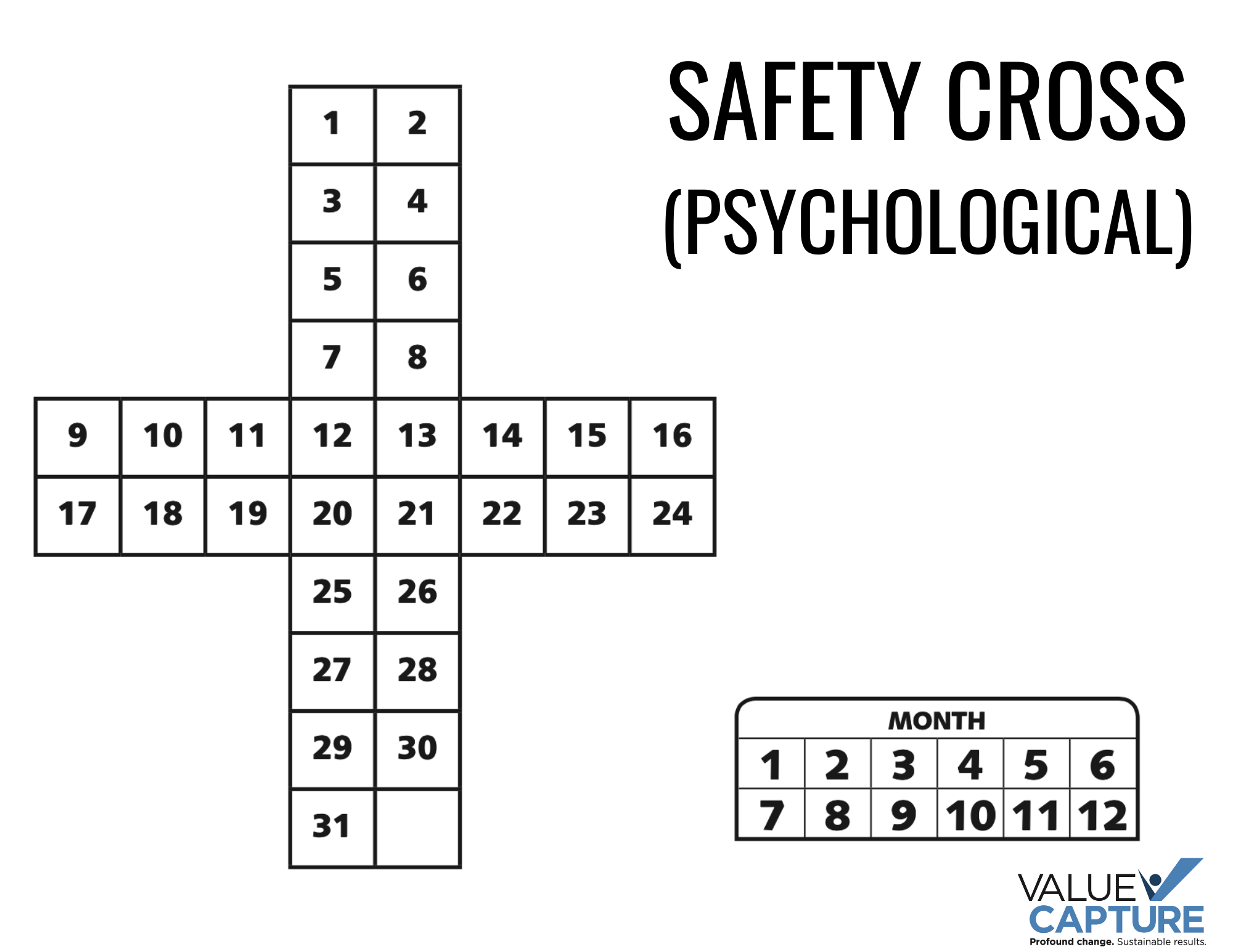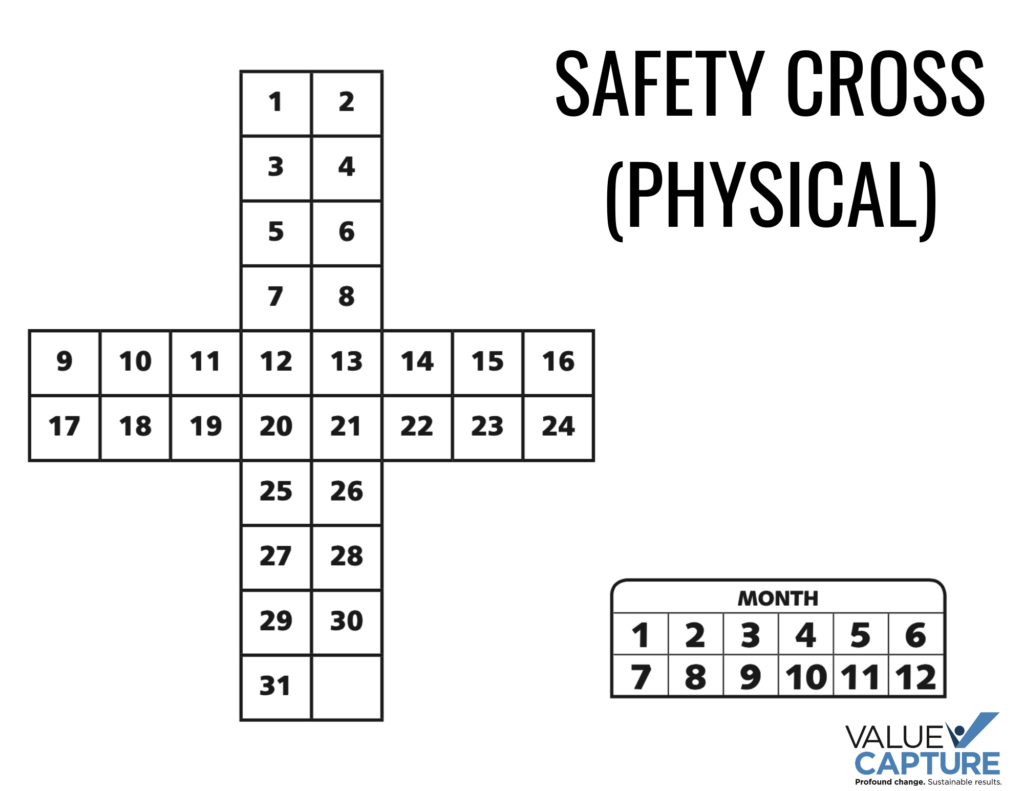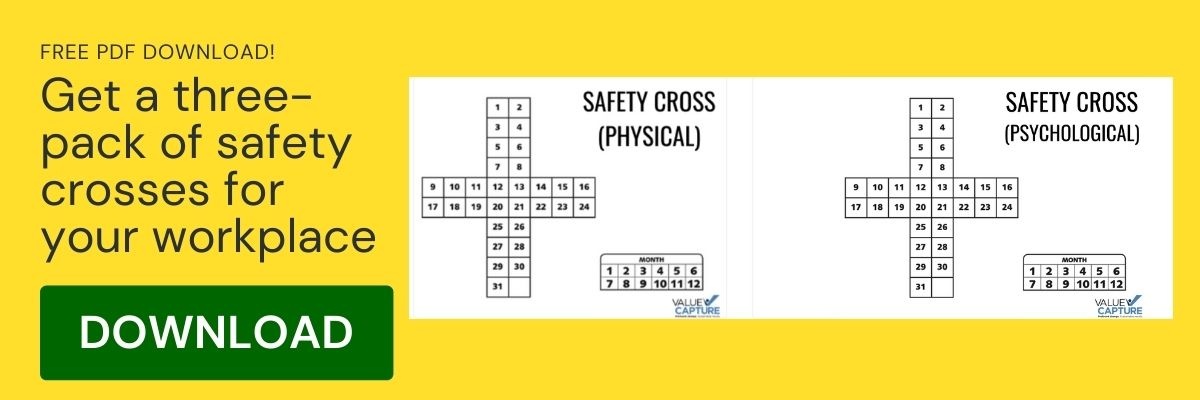Many hospitals have adopted a practice that most likely started in manufacturing. On their huddle boards, or team metrics boards (or even the board room), they post a visual tracking method referred to as a "safety cross."
It might look like what you see at the top of the post.
How is this used? It's filled out every day, where the date is filled in with a red marker if there was a safety problem, and green if everything was fine, as illustrated below.

You can also see some examples of filling in safety crosses and some other guidelines via a Canadian (Prince Edward Island) hospital website.
How is the safety cross used?
It's filled out every day, where the date / box is filled in with a red marker if there was a safety problem, and it's filled in green if everything was fine.
What is the threshold for coloring in a day green? Some organizations would color in the day's box red if there was an injury. Some color it red if there's a near miss. Some color it red if an unsafe condition was identified. It's more common that the threshold is "injury" -- whether it's a lost time injury or not.
Working Toward Zero Harm Requires Psychological Safety
Of course, green could mean "problem not known" or "problem not brought forward." We don't want to pressure people into just reporting or coloring in "green."
Our goal is "zero harm" (to patients and to staff), but we can also extend that to "zero near misses" or "zero risks."
The focus is usually on physical harm or physical safety.
As we believe at Value Capture, physical safety is the unarguable foundation for an organization, for all work and for all improvement across all metrics.
That said, we believe that "psychological safety" is not equally important, it is the essential prerequisite to achieving zero physical harm. Physical safety and psychological safety are connected. With a strong level of psychological safety in place (as part of the culture of the department or the organization), people feel safe and free to speak up about safety risks or ideas about improving safety.
More speaking up means more improvement, which means better safety.
People feel psychologically UN-safe if they are criticized, chastised, or punished for even mentioning safety risks. Therefore, a psychologically unsafe environment is going to be less safe physically.
Has anybody ever posted a safety cross for psychological safety?
Would you?
We could post a psychological safety cross and a physical safety cross next to each other on a board:


When would you fill in a "red" box on the psychological safety cross?
You might do so when these things occur:
- Somebody is belittled or disrespected for any reason
- Somebody is criticized for bringing up an idea
- Somebody is shunned for pointing out a problem, including a safety risk
- Somebody is punished for a systemic error
- Somebody is disciplined for admitting a mistake or the existence of an unsafe condition
That's not a complete list. You could add to it. Feel free to add a comment to the post if you have something to add.
What do you think? Is it worth tracking psychological safety? Is this as easy for people to gauge and evaluate? Or does tracking psychological safety (or the lack thereof) mean that leaders have to talk more about psychological safety? It seems like that would be helpful.
What happens if somebody feels unsafe pointing out a lack of psychological safety? Fill in a red box? Could that help spark a helpful conversation?
Download a free 3-page PDF with these various safety crosses

Written by Mark Graban
Mark Graban has served healthcare clients since 2005. Mark is internationally recognized as a leading author and speaker on Lean healthcare. His latest book is "The Mistakes That Make Us: Cultivating a Culture of Learning and Innovation."


Submit a comment